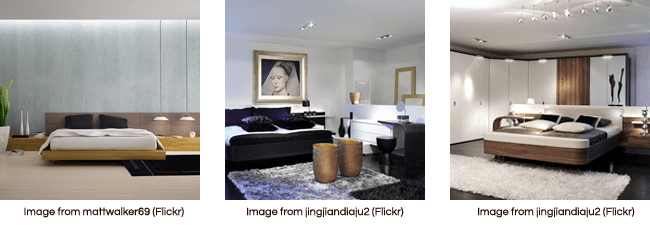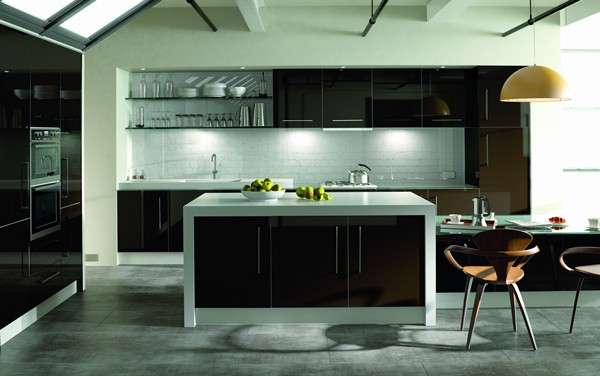Lighting, though not as obvious or as show-stopping as a new sofa, is just as vital to your home’s interior design. Neglect it at your peril.
Sadly this is what many people tend to do, with the majority of their thought and effort spent on the more obvious stuff like paint, wallpaper, floorboards and furnishings. This manifests in a wonderfully appointed room that’s presided over by a lonely luminaire that tries valiantly to illuminate everything evenly. Sadly though, a single light source can only do so much and the room – despite its lavish accoutrements – ultimately looks bland, flat and lifeless.
There is a better way, though. A way that works in concert with the rest of your room’s decor. A way that informs its furnishings and fixtures while also highlighting them. This way is called layered lighting.
What is layered lighting?
Layered lighting differs from traditional, singular lighting schemes in that it employs multiple lamps across three separate layers to lend a room extra depth and energy. The use of several light sources – rather than one – adds shadows where you want them and removes them where you don’t. It adds a sense of space, creates mood and makes accomplishing tasks easier, safer and quicker.
These layers each serve a different purpose and themselves consist of differing combinations of luminaires, so we’ve decided to break them down for you below…
Ambient Lighting
As the name implies, ambient lighting provides the general ambience and the main source of uniform illumination in the home. Light is generally cast over a wider area by pendants and downlight fittings positioned in the ceiling. This is the most common component of a lighting scheme and is the one you’d expect to see in most homes – even those without a layered scheme.
Accent Lighting
Accent lighting serves a mainly aesthetic purpose, highlighting specific parts of a room that are desirable to an interior designer. Attention can be directed toward an item of furniture or a particular wall hanging through the creation of contrasts in light and shadow. Wall washers and directional spotlights work in tandem with miniature decorative lamps to break up the uniformity of a room’s ambient lighting and add extra depth.
Task Lighting
Task lighting sits at the very base level of the scheme and consists of smaller fixtures that are used only as and when a task calls for it. Think of walking into a bathroom and switching on a mirror light so that you can shave, flicking on the small spotlight light above your bed so that you can read, or switching on the downlights underneath your kitchen cupboards so you can cook.
So, how does layered lighting fit into my home?
Below, we’ve included some example scenarios that show how layered lighting can make a difference in your home…
Kitchen
The multipurpose nature of the kitchen immediately lends itself to a multi-layered lighting scheme. It is unquestionably the busiest room in most households; a veritable hive of activity.

If we think of the three main facets of a lighting scheme: ambient lighting, accent lighting and task lighting – the kitchen represents a huge opportunity to get creative.
A kitchen’s primary ambient light can be supplied by many methods, but by far the most popular is recessed downlighting. Arranged in rows or scattered throughout, downlight fittings and their spotlights deliver the room’s main source of ambient illumination in an elegant, unobtrusive fashion.
Accent lighting serves several purposes in the kitchen, from highlighting desirable fixtures or areas, adding an extra layer of aesthetic appeal. The Factorylux range of Balloon Cages and Ceiling Pendants look great positioned above island units or working areas, as do any of our Plumen light bulbs.
To give the room an extra layer of energy and dynamism that instantly grabs people’s attention, fix an LED strip light underneath cupboards, shelves or standalone units to give them a layered, almost floating appearance.
Despite the aesthetic value afforded by a kitchen’s accent lighting, it is task lighting that’s perhaps the most essential component of the overall scheme. LED link lights can serve a dual purpose of looking great underneath cupboards and shelves, while also illuminating the working area below to enable you to prepare food. Recessed downlights and GX53 spotlights also make for an excellent task lighting addition.
Bedroom
Though not as complex or varied as the kitchen, a bedroom’s lighting scheme can be just as challenging and important. We spend a good chunk of our time here, so it must encourage a calming, relaxed atmosphere that we can unwind in after a long day at work.

Ambient lighting is probably the most essential component of a bedroom’s lighting scheme and it demands a little more thought than other rooms in your home.
As in the kitchen, recessed downlights are useful but their colour, arrangement and intensity need to be chosen carefully. Warm white LED or halogen spotlight light bulbs lend the room the cosy, warm ambience that’s vital for a good night’s sleep. We’d also recommend installing a dimmable circuit and accompanying dimmer switch to give yourself extra control. In larger rooms, why not install multiple circuits that allow you to dim different areas separately?
LED strips also have a part to play here, too. Again, placing them under fixtures, cupboards or shelves can look effective, but – for an extra twist – why not place them behind your TV? This process, known as bias lighting, creates a more immersive experience that also eases the strain on your eyes and still allows you to sleep afterwards. Manufacturers have already integrated this technology into some televisions, but you can create the same effect with one of our LED strip light kits.
It’s in the bedroom where the true versatility of pendant lighting really comes to the fore, though. Position any of our Factorylux pendants above your bed and you have the ideal reading light that not only looks great but allows you to see the pages of your book perfectly.
Bathroom
This isn’t a room where we spend a great deal of time but the few, short minutes that we do are precious. The solitude and seclusion afforded by a bathroom unlike any other in your home, and it is undeniably home to a range of different activities that demand a carefully planned layered lighting scheme.

Ambient lighting in your bathroom is similar to any other in your home, but with a twist. The characteristically clammy atmosphere can cause many problems for your electrics, with potentially deadly consequences. To avoid any such problems we’d recommend taking a look at our guide to bathroom IP-zones while making sure that any downlight fitting (or any bathroom luminaire, for that matter) is sufficiently IP rated.
The requirement for IP rated fixtures does impose certain restrictions on what you can use in here, but there are still myriad options for you to consider.
LED strip lights can be positioned either above or below any wall-mounted fixture (mirrors, shaving cupboards etc.) to create a subtle, recessed effect that provides effective accent lighting.
Uplighters positioned around the bath lend it an almost ethereal look that cannot help but pull you in, while a downlight integrated into the head of a monsoon shower creates a similar, even celestial vibe.
The majority of a bathroom’s tasks take place in or around the sink area, so it makes sense that this is where most, if not all, of its task lighting, will be found. Double-ended LED tubes and architectural lamps can be positioned above or alongside mirrors and allow you to shave, brush, preen or wash comfortably.
Before you start…
Remember, layered lighting should be viewed as a companion to your home decor and not as an afterthought. To get the most out of your lighting scheme it’s always best to plan it around your furnishings and vice versa. Approach it with the same vigour and enthusiasm as you would your colours, fabrics and fixtures, and the benefits you’ll reap will make it so worthwhile.


